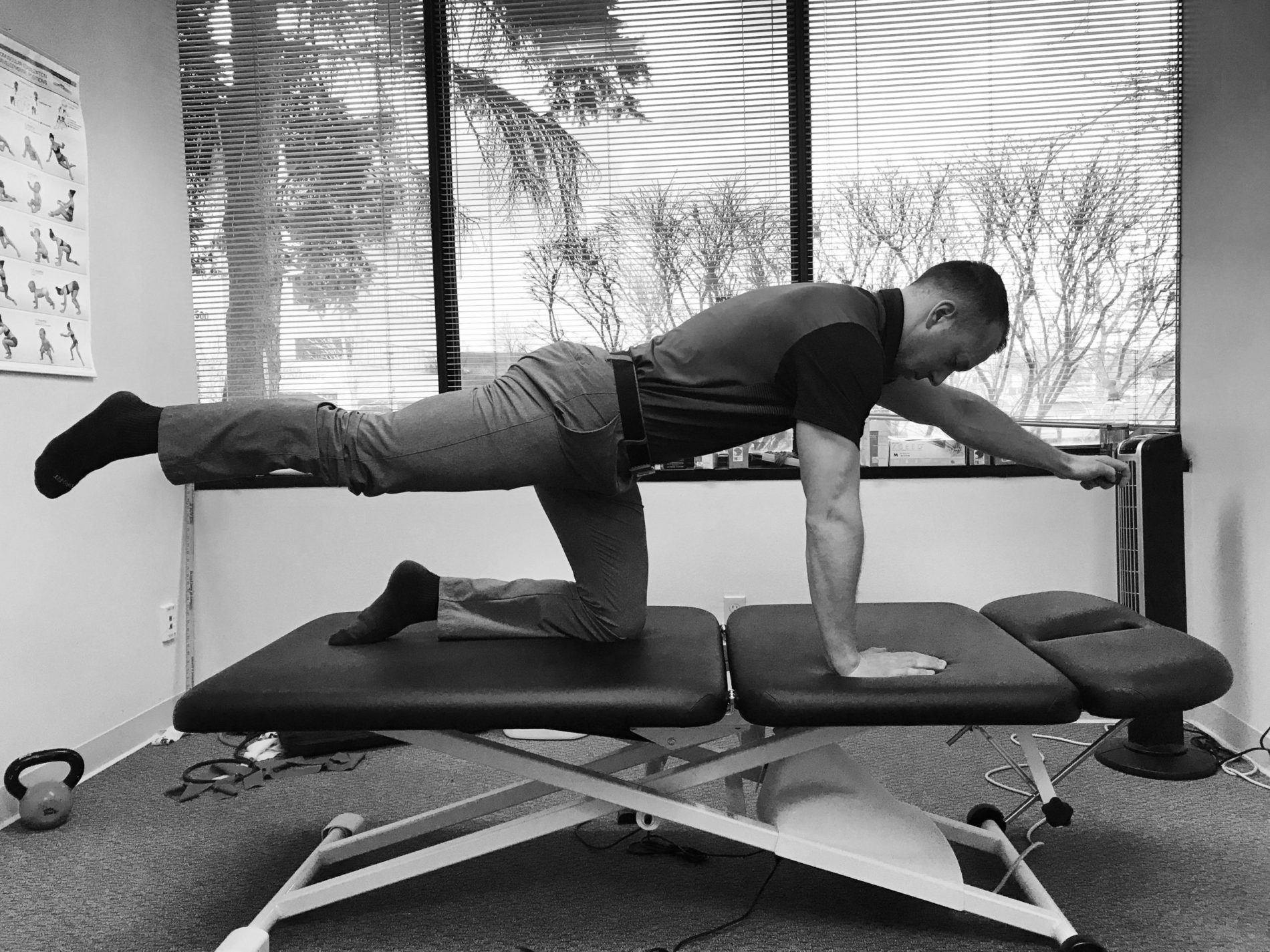Core Exercises – Do’s and Don’ts
Many patients understand they need to strengthen their core in order to live functional and pain free lives. However, most do not know where to start. The popular opinion is exercises such as sit-ups, crunches, bicycle crunches, and Russian twists are the primary exercises to improve core strength. Unfortunately, these commonly performed exercises are not the best choice when looking to add strength and functionality to your core.
The Problem with Sit-ups and Crunches
Sit-ups and crunches are perhaps the most regularly performed core exercises. These exercises are effective at increasing the tone of the six-pack or rectus abdominis muscle group. While great for aesthetics, a tight and toned six-pack is not essential for a functional core and may even be detrimental. The issue with sit-ups and crunches are the forces placed on the spine during these exercises. Both involve repetitive flexion of the lumbar spine and most of modern society already gets too much ‘lumbar flexion.’ Lumbar flexion means rounding forward of the low back. The low back is in flexion when we are sitting in our car, at work, or on the toilet. The low back is flexed when we pick items up from the floor with improper form. The net result of so much lumbar flexion is placing undue stress on the discs, muscles, ligaments, and nerves of the low back. Sit-ups and crunches involve repetitive flexion of the low back and thus add fuel to the ‘flexion fire’ we get all throughout the day.
The Problem with Rotational Core Exercises and Stretching
The Russian twist and bicycle crunches are other commonly performed core exercises that are not ideal for the function of the core or spine. The Russian twist is performed by balancing on your pelvis with legs suspended in the air and knees bent while the upper body is held at roughly a 45 degree angle. Next, the athlete uses their hands or a medicine ball to twist back and forth in an attempt to work the abdominal obliques. Bicycle crunches are similar except the individual is on their back and the rotational crunch is combined with a straightening of the opposite leg and hip. The first problem with the Russian twist is it is extremely difficult to keep the spine in a neutral position and many individuals round their backs due to a lack of core strength and balance. Once again, many people are developing a detrimental position of lumbar flexion during this exercise.
Another issue with the Russian twist and bicycle crunch is the forced rotational load it places on the spine. Functional movement specialists now agree the main purpose of the core is to resist forces placed against the spine rather than actually creating movement. The lumbar spine only rotates 2-3 degrees per segment and thus requires more stability in the rotational (transverse) plane compared to mobility. I’ll explain exercises such as the Pallof Press and Cross Press in a future blog post, as both are excellent exercises for improving core stability in the rotational plane.
Basics of Effectively Performing a Core Exercise
Before we get into the specific exercises I teach my patients, I’ll explain why form is important for any core exercise you perform. First, the spine needs to be in a neutral position. A neutral spine may look different for each person, but the spine should be straight and may have a slight extension curvature. Extension is the opposite of a flexed and rounded position of the spine. The two variables that affect proper neutral spine positioning are your rib positioning and your pelvic posture. Many patients have what is called ‘flared ribs’. This means your ribs are protruding upwards and forwards and may even be visible. When the ribs are in this position the diaphragm muscle cannot function properly and core strength will suffer. Use an exhale breath to push your ribs downwards towards the floor to place them in a more ideal position.
Secondly, you need to be aware of the position of your pelvis. Think about your pelvis as a fish bowl filled with water. If you have what we call an ‘anterior pelvic tilt’ your pelvis is dumped forward and water will be spilling out of the metaphorical fish bowl. Less commonly, patients may adopt a ‘posterior pelvic tilt’ where the water will be spilling backwards. Both of these pelvic postures are detrimental to neutral spine positioning, as well as core strength. Always think about keeping your pelvis tucked under you so water cannot spill out of the fish bowl. By making sure your ribs and pelvis work together to maintain a neutral spine, you will safely perform core exercises.
Practice these Core Exercises:
3 Position Plank
The 3 position plank is a sequential exercise involving a front plank, right side plank, and left side plank. Each position is held for 10 seconds before switching positions. Do your best to avoid dropping to the ground when switching positions. Switching positions every 10 seconds forces the brain and nervous system to react to a new stability pattern frequently and is thus more typical of how we move in life and sports. Additionally, by switching positions every 10 seconds we better guarantee perfectly executed reps.
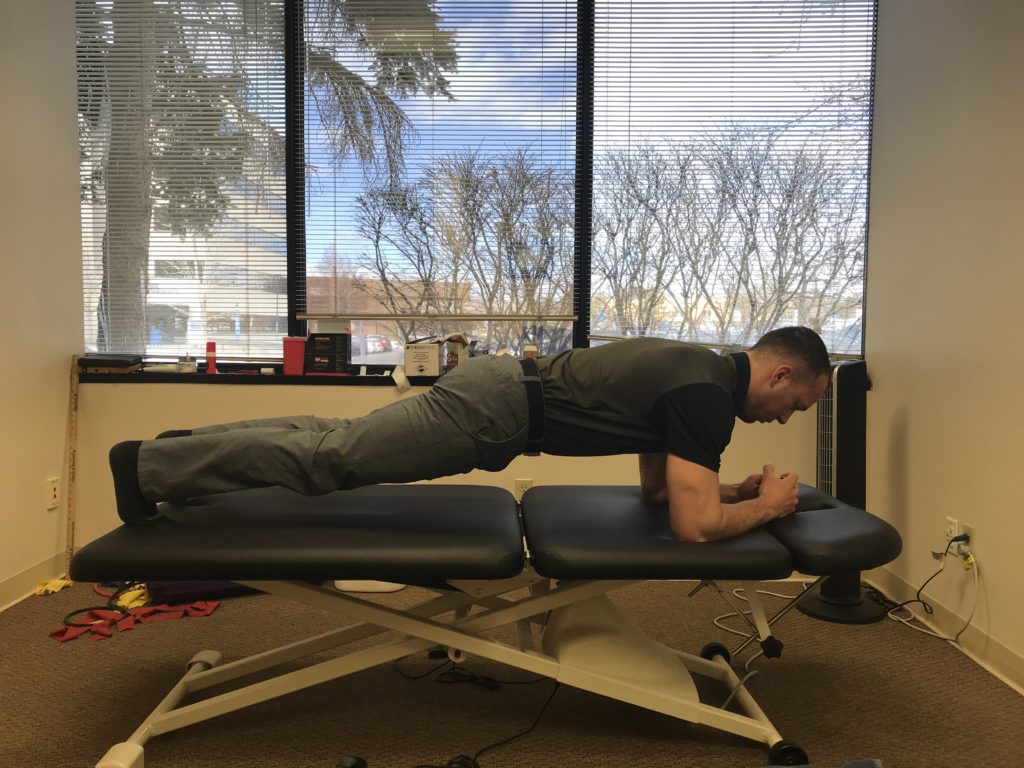
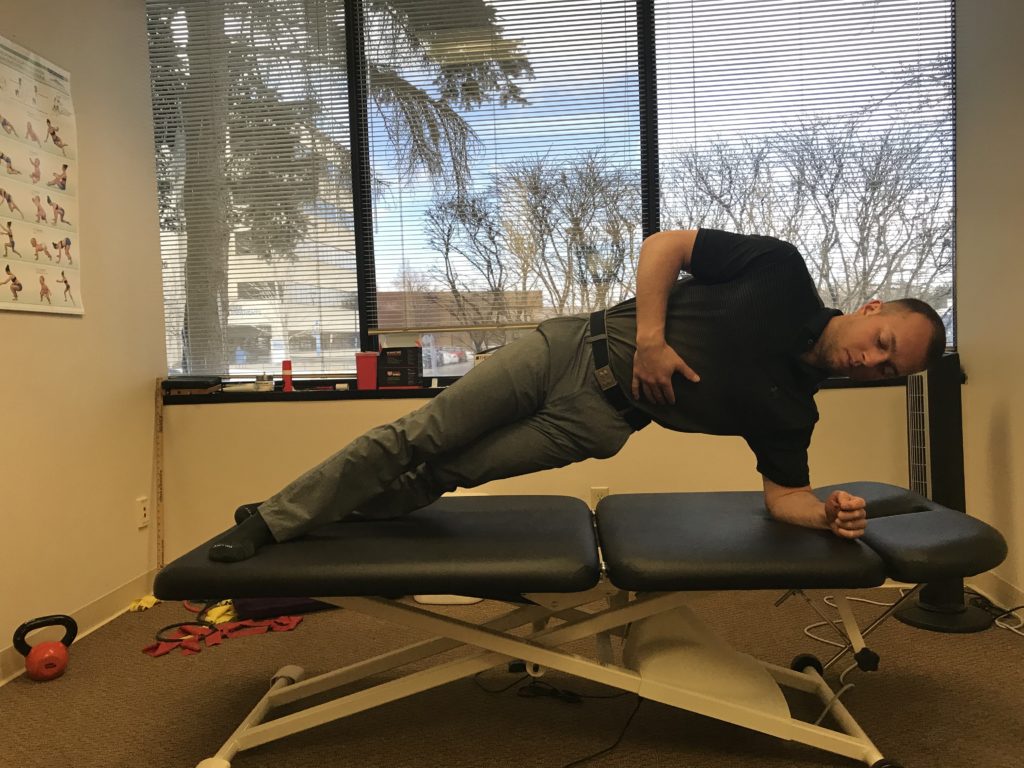
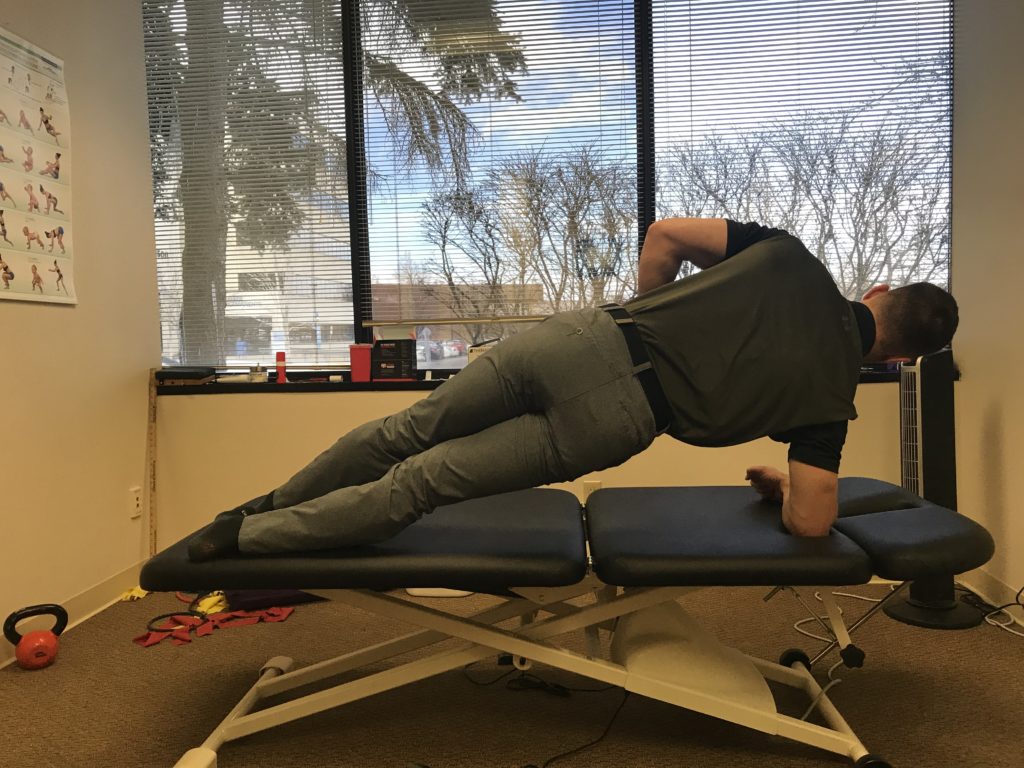
Dead Bug
The dead bug is another excellent option for building your core strength. Lay on your back with your hips, legs, and arms raised. Simply holding this position is a difficult exercise in itself and is an effective way to exercise your core. Make the movement more dynamic by reaching one arm over your head and slowly lowering the opposite heel towards the ground. Alternate sides, and perform in succession while making sure to keep your ribs down, low back glued to the ground, and head supported and slightly elevated to protect your neck.
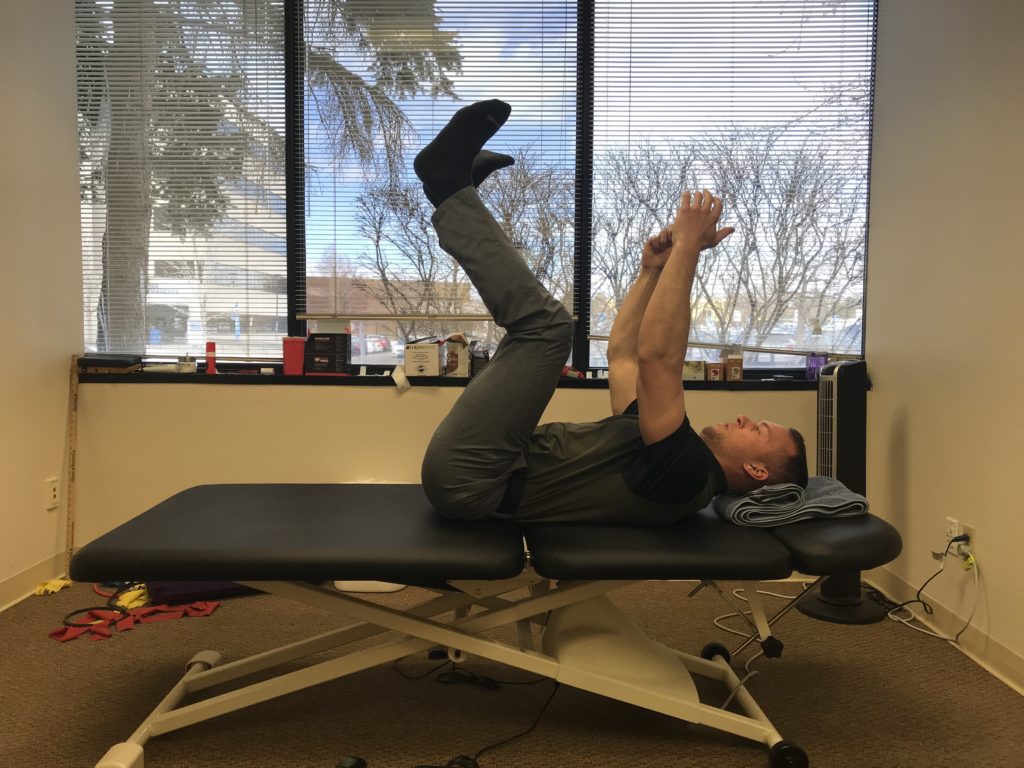
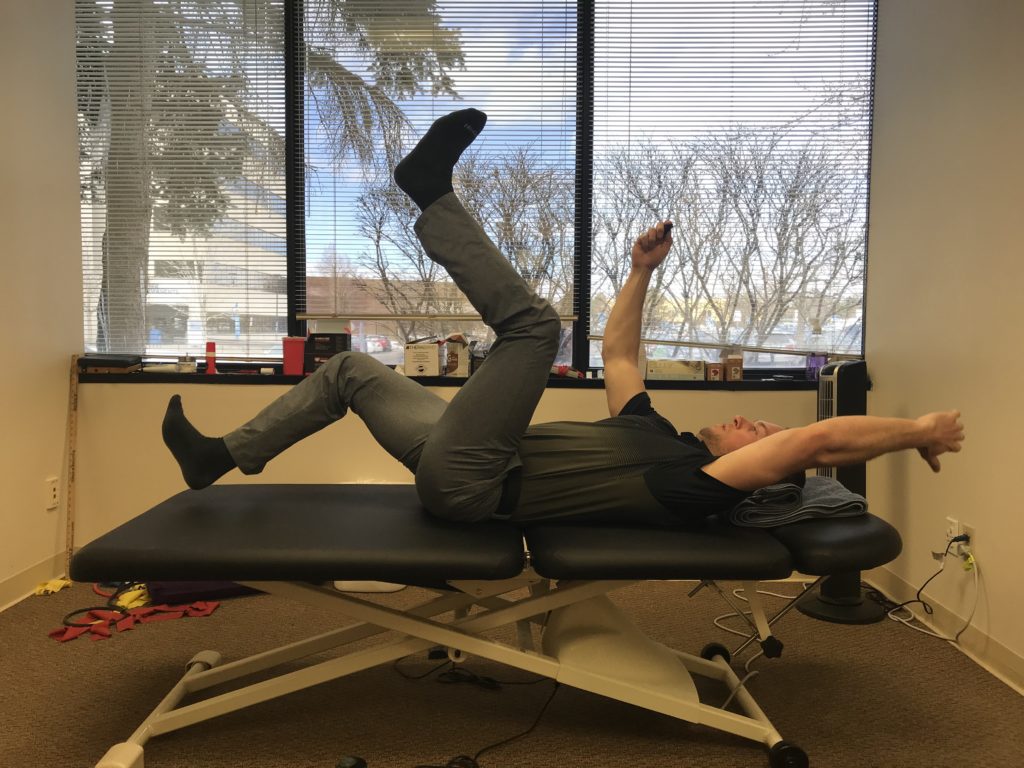
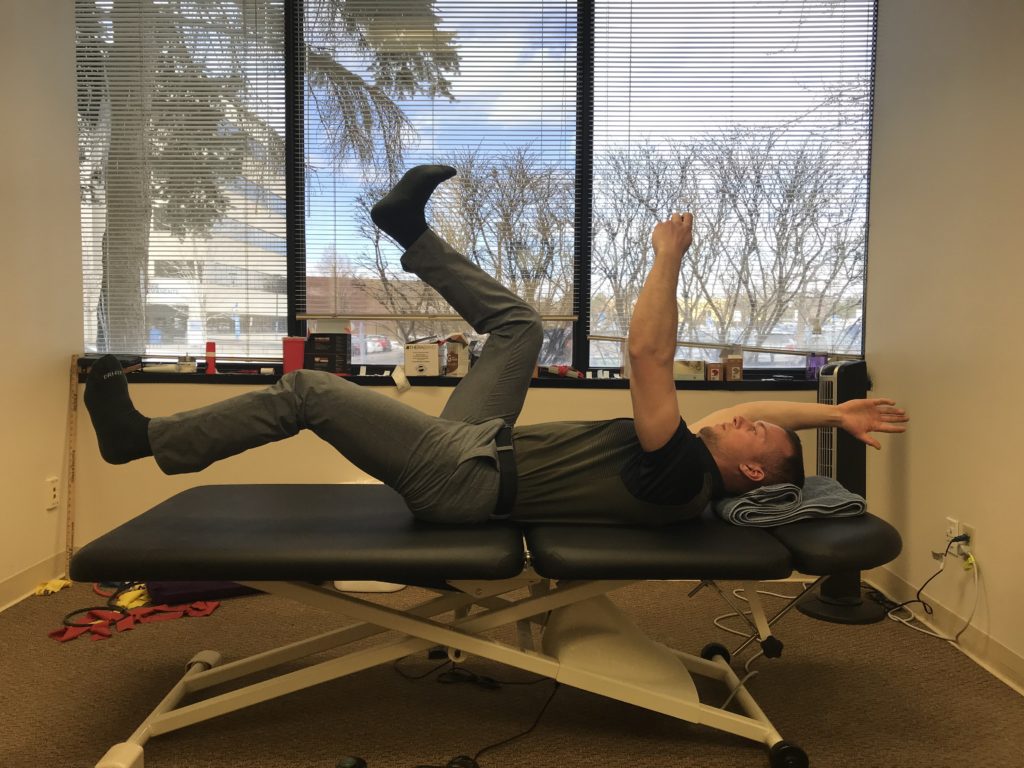
Bird Dog
The bird dog exercise teaches you to move your extremities while maintaining a neutral spine. The exercise does an excellent job of mimicking real athletic activities you will face in daily life. Get in a tabletop position with your hands stacked under your shoulders and your knees stacked under your hips. Your chin should be tucked and the back of your neck long with no creasing of the skin. Slowly move one of your arms forward while simultaneously extending the opposite leg backwards. The back leg only needs to be about 2 inches off of the ground to avoid hyper-extending your low back. Hold the completely extended position for a count of 2 and then return to neutral. Alternate sides while keeping a neutral spine and make sure to not let your pelvis rotate and shift excessively. Imagine there is a glass of water resting on the base of your low back and you do not want to let it spill!
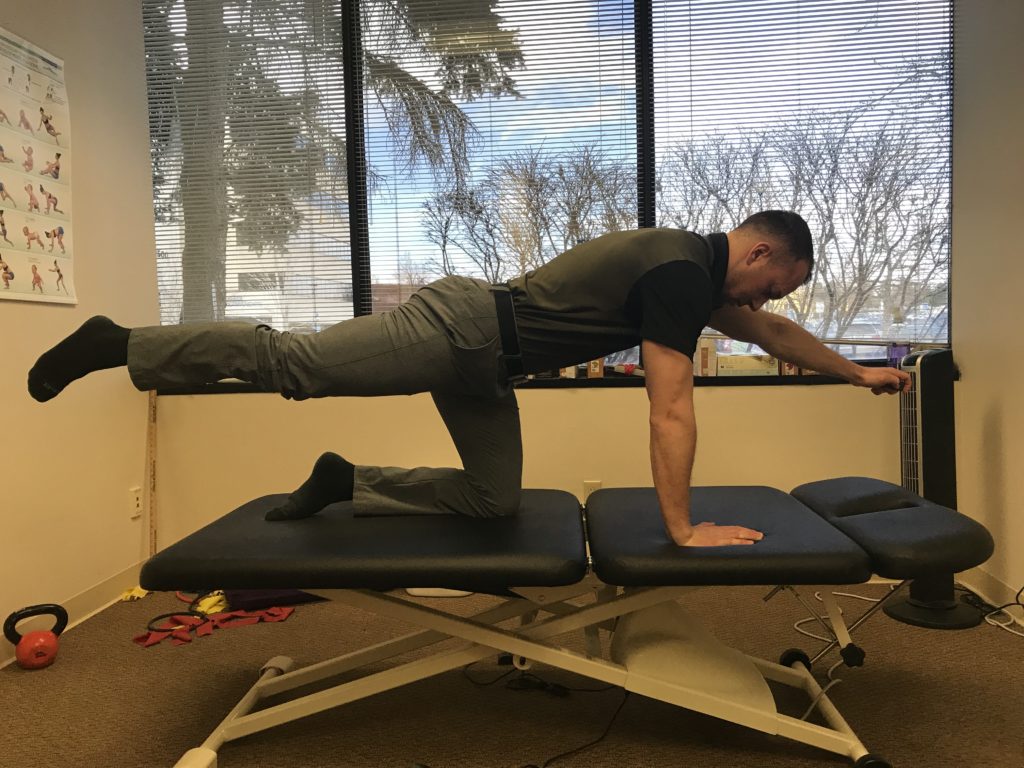
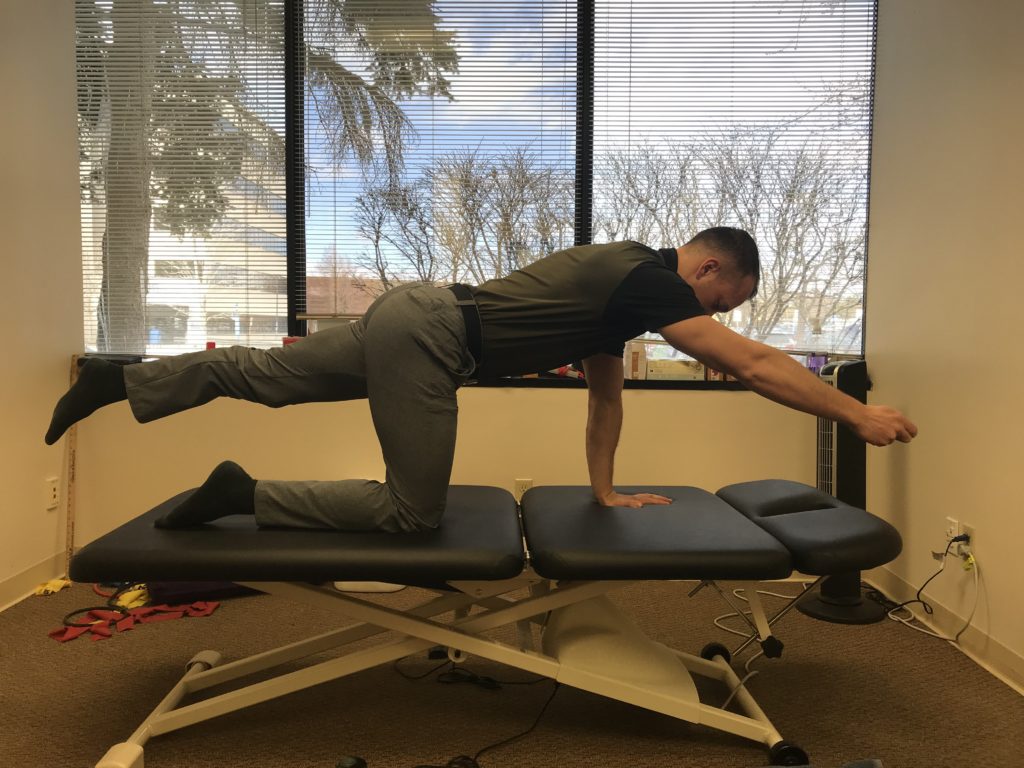
My goal with this blog post is to provide you with safe and effective exercises for improving the strength and function of your core. Enjoy!
Post written by Dr. Riley Kulm, DC. Check out Dr. Riley Kulm’s bio here.


